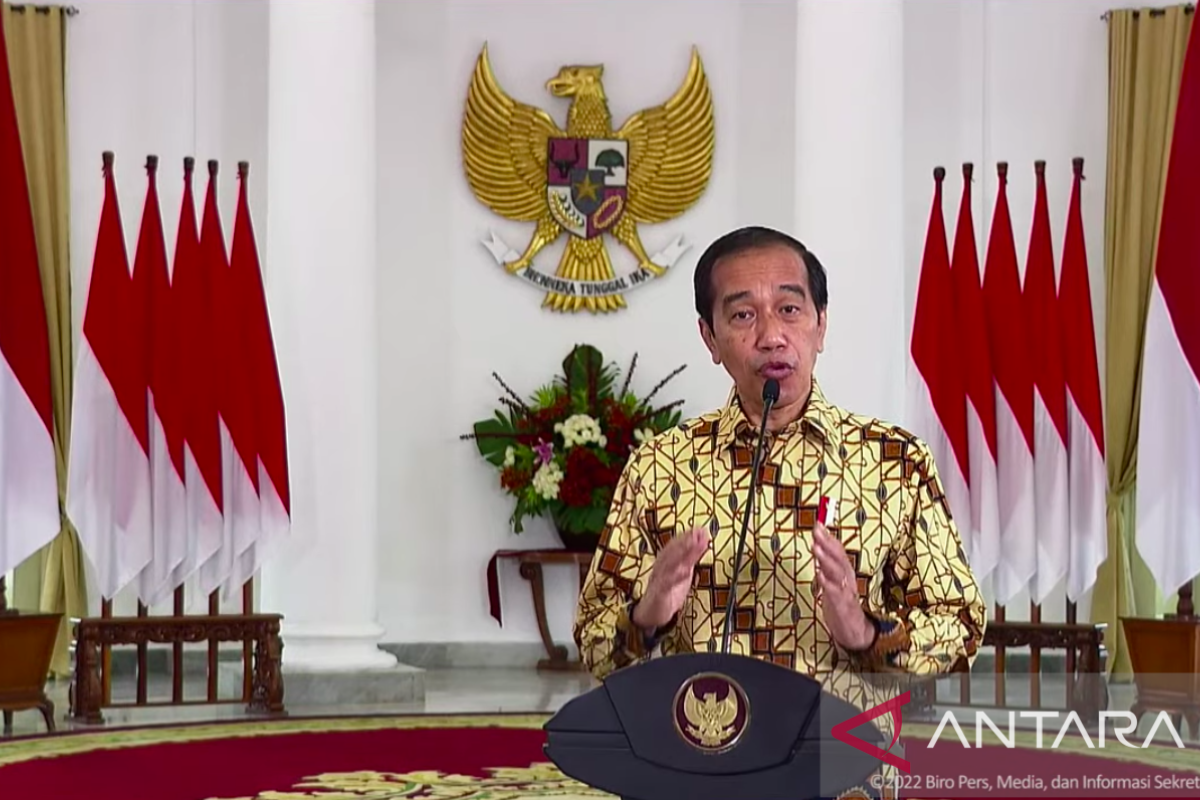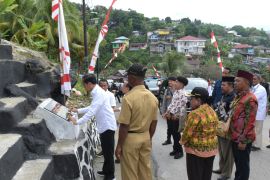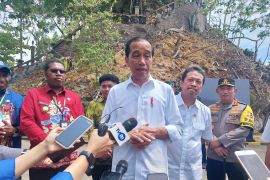Business permits that are issued must take into account the disaster risk. Infrastructure development must reduce disasters, not increase disaster riskJakarta (ANTARA) - Infrastructure development should reduce the disaster risk rather than increase it, according to President Joko Widodo (Jokowi).
The president noted that all national and regional development programs should be oriented towards disaster-resilient policies.
"Business permits that are issued must take into account the disaster risk. Infrastructure development must reduce disasters, not increase disaster risk," President Jokowi stated while opening the national coordination meeting for the National Disaster Mitigation Agency (BNPB) virtually from the Bogor Presidential Palace, West Java, Wednesday.
The president affirmed that the National Disaster Mitigation Agency (BNPB) must actively invite all central and regional government officials to orient development programs to the concept of disaster resilience.
“Disaster-resilient policies should go mainstream,” he affirmed.
“The BNPB must actively invite all central and regional government officials, so that all development programs are oriented towards being resilient to disasters. All of these must be invited," the president emphasized.
The head of state also noted that the disaster education system should continue to be improved, especially in disaster-prone areas. A culture of disaster awareness must start early on from every individual, family, community, and school.
"Explore various types of local wisdom that exist in the community, train the community to be responsive to disasters, and conduct exercises and simulations at any time. Do not wait for a disaster to strike," he remarked.
The head of state emphasized that the potential and strengths that exist in the community should be optimized to create a disaster-resilient society. Disaster-resilient Indonesia must become a major agenda implemented by all components of the government and nation.
"We embrace the strengths and potentials that exist in society. We create a disaster-resilient society,” the president remarked.
The poor concept of buildings and spatial planning for residential areas indicate that the public is ill-prepared to face disasters, according to the Meteorology, Climatology and Geophysics Agency.
"It is not an earthquake that causes casualties or injuries in every incident. On the contrary, it was the result of a building tumbling down," Head of the Meteorology, Climatology and Geophysics Agency (BMKG) Dwikorita Karnawati earlier noted.
Karnawati remarked that the dynamics of erratic seismicity, combined with the inappropriately designed spatial layout of settlements, which were not so adaptive to disasters, could worsen the condition for the public when the earthquake hits.
Based on the agency's research, the causes of a building collapse were its location above the soil layer that is classified as soft as well as the construction of buildings that failed to meet the earthquake-resistant standards.
For instance, the 6.6-magnitude earthquake that produced tremors in Pandeglang District, Banten, on Friday, January 14, caused severe damage to buildings.
It was then exacerbated by public panic due to the lack of knowledge and skills to anticipate and deal with disasters.
Karnawati deemed Indonesia as being ill-prepared to face a major earthquake that could strike at any point in time. To this end, planning and development concepts were crucial for addressing potential risks, impacts, and hazards of the disaster in an area.
Related news: President urges Basarnas to intensify collaboration
Related news: BMKG urges Banten govt to strengthen disaster preparedness
Related news: Hail phenomenon could still occur until March-April: BMKG
Translator: Indra AP, Azis Kurmala
Editor: Sri Haryati
Copyright © ANTARA 2022












